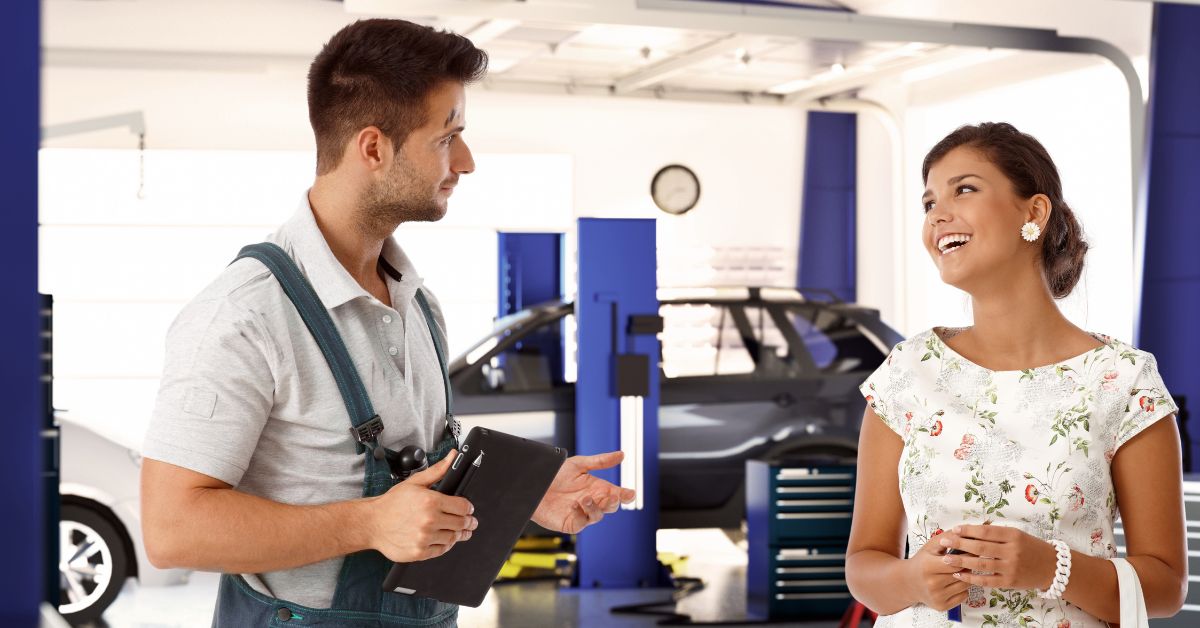As the internet becomes more interwoven with our lives, it’s more important than ever for auto repair shops to refine their online presence. One study finds that as many as 97% of consumers search online to find local businesses, making it important not only that they find your shop’s site but that the site itself is optimized in alignment with SEO best practices.
When building your auto shop’s website, consider both search engine performance as well as client engagement, ultimately creating an online presence that appeals to both of these “readers.”
Here are some common mistakes to avoid.
1. Barebones Website
Auto shop owners should avoid creating basic, single-page websites. While one lone page could certainly help convey your business’s name, contact information, hours, and address, only including these elements neglects additional opportunities for engagement.
As well as contact information, every auto repair shop website should contain the following pages:
- About us: To build trust in new visitors, your website should have a page that tells the story of your business and identifies key leaders and team members, noting their experience and skill sets.
- Services: Another page of your site should provide an exhaustive list of all of the services that your business can provide. This helps clients to understand if you’re what they’re looking for.
- Testimonials: Creating a page with testimonials from clients helps to build social proof of your shop’s quality.
- Call-to-action: Arguably the most important part of your website will be clearly labeled calls to action. In most cases, you’ll want every page of your website to contain a button that allows a visitor to book a service, either through phone or an online portal.
2. Lack of Content
Another essential component of your auto shop website will be a blog section filled with useful content. By creating an active blog full of useful topics pertaining to vehicles and their maintenance, you can further demonstrate your shop’s expertise to users.
Equally important is a blog’s effect on SEO. By creating blog content that answers user’s queries, you can increase the likelihood of people finding your website in the first place. Utilizing photos and videos on your blog posts can also increase your shop’s visibility in search rankings.
3. No keyword strategy
While SEO optimization can be a full-time job—in fact, most larger companies have entire teams devoted to it—smaller businesses like auto shops can get started by having a basic keyword strategy.
When people use search engines to find local businesses, they invariably type certain words into Google. The exact words they search for are called keywords, and search engines use these keywords to present users with relevant results.
To start building your keyword strategy, you should make a list of words and queries that are relevant to your business. Since auto shops are inherently local businesses, you might even utilize long-tail keywords that utilize your location. For example, as opposed to targeting oil change, you might target oil change in Tulsa.
To get started, you can use a free tool like WordStream. By entering keywords into this tool, you can see what people are searching for and in what quantities. From there, you can begin including these keywords in your site’s content, ultimately resulting in greater traffic.
4. Not Mobile-Friendly
According to a report from Hitwise, roughly 60% of all online searches are conducted through mobile devices, making it essential that your shop’s website displays clearly on both computers and smartphones.
Additionally, search engines now use mobile-friendliness as a factor in their rankings, meaning that mobile-friendly websites will show up higher in search results.
5. Slow, Poorly-Optimized Structure
While you’ll want to fill your website with images, videos, and call-to-action buttons, all of these elements can potentially slow the performance of your page. Fixing this may be as simple as changing the template of your site, but sometimes it requires a bit more technological know-how.
Similar to mobile-friendliness, page speed also plays into search engine rankings. Websites that load more quickly tend to rank higher than poorly optimized pages.
The easiest way to tackle this issue—as well as mobile-friendliness—is to work with a website partner that offers optimized, mobile-friendly templates you can customize to your needs. AutoVitals, for example, offers plug-and-play templates that can easily be customized to individual auto shops.
Start Capturing More Website Visitors
Once a person is on your site, the next step is to get them to schedule an appointment. In order to achieve this, your site needs to build trust and then provide a clear, frictionless path to book an appointment.
The best way to achieve this is through a tool like BayIQ. Made specifically for auto repair shops, BayIQ integrates with your existing website or point-of-sale software to offer powerful marketing capabilities, like customer loyalty programs, online scheduling, appointment reminders, and more.
To learn more about how BayIQ can help build your shop’s online presence, schedule a free demo today.


